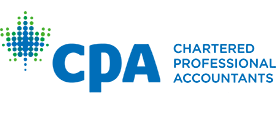You’ve created what you want to sell, but what price should it be? You don’t want to make it too expensive, otherwise people won’t buy it, but you have also spent your own time and money on it, so you don’t want to lower your profit margin and walk away with a few cents either.
You need to still make a living after all.
Here are three pricing strategies that you can use to set your just price right.
Cost-based pricing:
Cost-based pricing is where you take the service cost and then add a mark-up to get your gross profit margin. To determine the service cost, you need to consider all the costs involved in making your product or performing your service, such as materials used, labour, and travel time.
Example:
Your company is selling face cream. It cost you R150 to make each tub (including ingredients, labour and packaging) and you mark it up by 30%: your selling price would be R195 (150 x 1.30) per tub, and your profit would be R45 per tub.
GREAT: This approach ensures that your production costs are covered and you are able to target your gross profit.
NOT-SO-GREAT: If the cost to produce your product/service is high and then you further mark it up, your pricing will not be competitive in the market.
Competitor-based pricing:
This pricing strategy is based on setting your selling price similar to, or the same as, that of your competitors. This pricing is useful for companies that sell generic products or services.
GREAT: This structure allows for market-related pricing and for you to be on the same playing field as your competitors.
NOT-SO-GREAT: A market leader can have a lower cost of production, so the profit margin could be significantly less.
Value-based pricing:
Value-based pricing is directly related to the value that the product/service creates for the customer. This is a difficult strategy for SMMEs to nail down because you need to have a good understanding of the psychology behind your target market, BUT, this pricing method is usually the most profitable.
Example:
Your company manufactures a car-engine oil that reduces fuel consumption, and this will save the average customer around R12 000 a year. You can price the product at R5 000 because it is still a bargain for the customer.
GREAT: You’ll make a solid profit!
NOT-SO-GREAT: The downside is that it disregards market-related pricing, and many may choose a cheaper alternative.
So, what do you need to do?
A good start is to do thorough market research on both your competitors and your target audience. Find what the market-related prices are and what people are prepared to pay for your product/service.
We get it. It’s hard to get the pricing just right. Contact us at Outsourced Finance and we’ll help you figure out that magic number.



